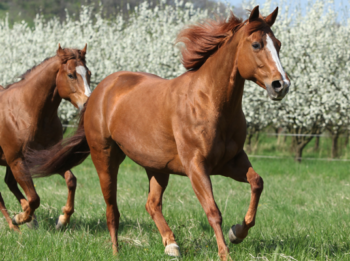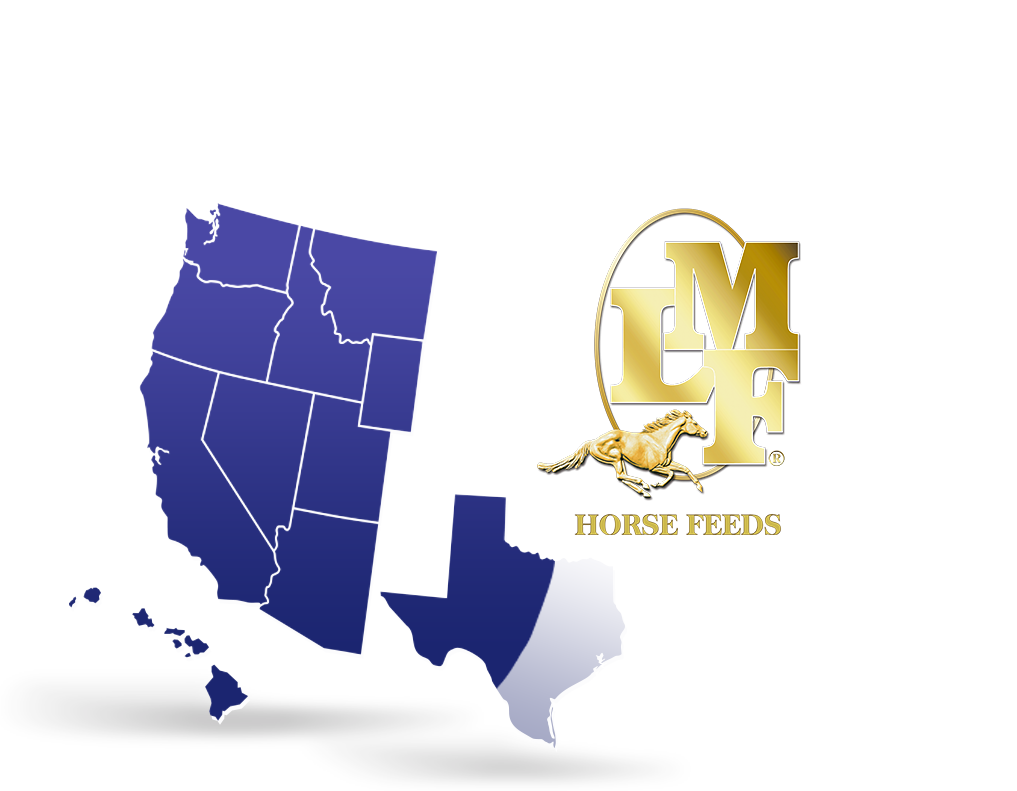Hyperkalemic Periodic pParalysis (HYPP)
Over 20 years ago, a quarter horse called Impressive was winning all the halter classes. Impressive was strikingly muscled and became in huge demand as a breeding stallion. Impressive showed that he had a very important trait as a breeding stallion ‐ he had the ability to pass on his sculptured musculature to his offspring. It wasn’t for quite some years that people started noticing that Impressive’s offspring had inherited more than just his looks. Along with massive muscles came a far less welcome inheritance ‐ which came in the form of intermittent episodes of weakness, collapse, or even death. When veterinarians found that these attacks were accompanied by a high level of potassium in the blood, the inherited disease was named hyperkalemic periodic paralysis (HYPP).
Today, HYPP continues to plague the Quarter horse industry, although the ability to identify affected individuals, coupled with responsible action on the part of breeders, has helped us to gain control over this genetic, or inherited disease. We have learned much about this disease, yet it persists in the Quarter horse and horses with Quarter horse blood, such as Appaloosas, Paints, and Palominos.
Hyperkalemic periodic paralysis (HYPP) is a co-dominant single autosomal gene disorder that primarily affects Quarter horses. In the muscle cells of horses with HYPP, regulation of the movement of sodium and potassium to and from cells is disrupted. Sodium channels are “pores” in the muscle cell membrane which control contraction of the muscle fibers. When the defective sodium channel gene is present, the channel becomes “leaky” and makes the muscle overly excitable and contract involuntarily. The channel becomes “leaky” when potassium levels fluctuate in the blood. This can result in repetitive muscle contractions and in severe cases muscle fasciculation’s. These are usually first evident over the rib cage and flank areas, but may spread to other muscle groups.
This may occur with fasting followed by consumption of a high potassium feed such as alfalfa. Hyperkalemia, which is an excessive amount of potassium in the blood, causes the muscles in the horse to contract more readily than normal. This makes the horse susceptible to sporadic episodes of muscle tremors or paralysis.
HYPP is a dominant genetic disorder meaning both homozygous positive (HH) and heterozygous (nH) horses will be affected. Only homozygous negative (nn) horses are not affected by HYPP. Under ideal management practices, the defective gene does not appear to have adverse effects, but stress and/or increased potassium in the serum can trigger clinical signs of muscle dysfunction. Why some horse’s manifest severe signs of the disease and other exhibit little or no signs is unknown and currently under investigation. Unfortunately, a horse carrying the defective gene but showing minimal signs has the same chance of passing the gene to future generations as does the affected horse with severe signs.
HYPP is characterized by sporadic attacks of muscle tremors (shaking or trembling), weakness and/or collapse. Attacks can also be accompanied by loud breathing noises resulting from paralysis of the muscles of the upper airway. Occasionally, sudden death can occur following a severe paralytic attack, presumably from heart failure or respiratory muscle paralysis.
Attacks of HYPP can take various forms and commonly have been confused with other conditions. Because of the muscle tremors and weakness, HYPP often resembles exertional rhabdomyolysis (“tying‐up” syndrome). “Tying‐up” syndrome can be caused by many different circumstances, including exercising a horse beyond the capacity to which it has been trained, as well as nutritional deficiencies and metabolic diseases. A distinguishing feature of HYPP from “tying‐up” syndrome is that horses usually appear normal following an attack of HYPP.
The most important management practice for HYPP positive horses is to limit the dietary intake of potassium to less than 1% of the total diet. The largest source of potassium in the diet of a horse is hay. Forages can contain over 3% potassium, factors such as moisture content, stage of maturity and variety (legumes contain more than grasses) all effect forage potassium content. Grains also contain potassium but at a lower rate usually less than 0.5%.
When developing a feeding regime for these horses grass hays or pastures such as Bermuda grass, prairie hay, or timothy should be used as a forage source instead of legume hays such as alfalfa. The use of cereal grain as a major portion of the diet will reduce the potassium concentration of the diet. Beware of commercial feeds containing high amounts of molasses, soybean meal, or dehydrates alfalfa as these all have relatively high potassium concentrations (greater than 2%).
Dietary adjustments include (1) avoiding high potassium feeds such as alfalfa hay, brome hay, canola oil, soybean meal or oil, and sugar molasses and beet molasses, and replacing them with timothy or Bermuda grass hay, grains such as oats, corn, wheat and barley, and beet pulp; (2) feeding several times a day; and (3) exercising regularly and/or being allowed frequent access to a large paddock or yard. Due to the high water content of pasture grass, a horse is unlikely to consume large amounts of potassium in a short period of time if kept on pasture. If the horse is experiencing problems on its present diet, it is recommended to feed a diet containing between 0.6% and 1.5% total potassium concentrations.

Available Across the West.
Distributed throughout the Northwest, Southwest, Hawaii and Texas.
Find a Dealer Near You

